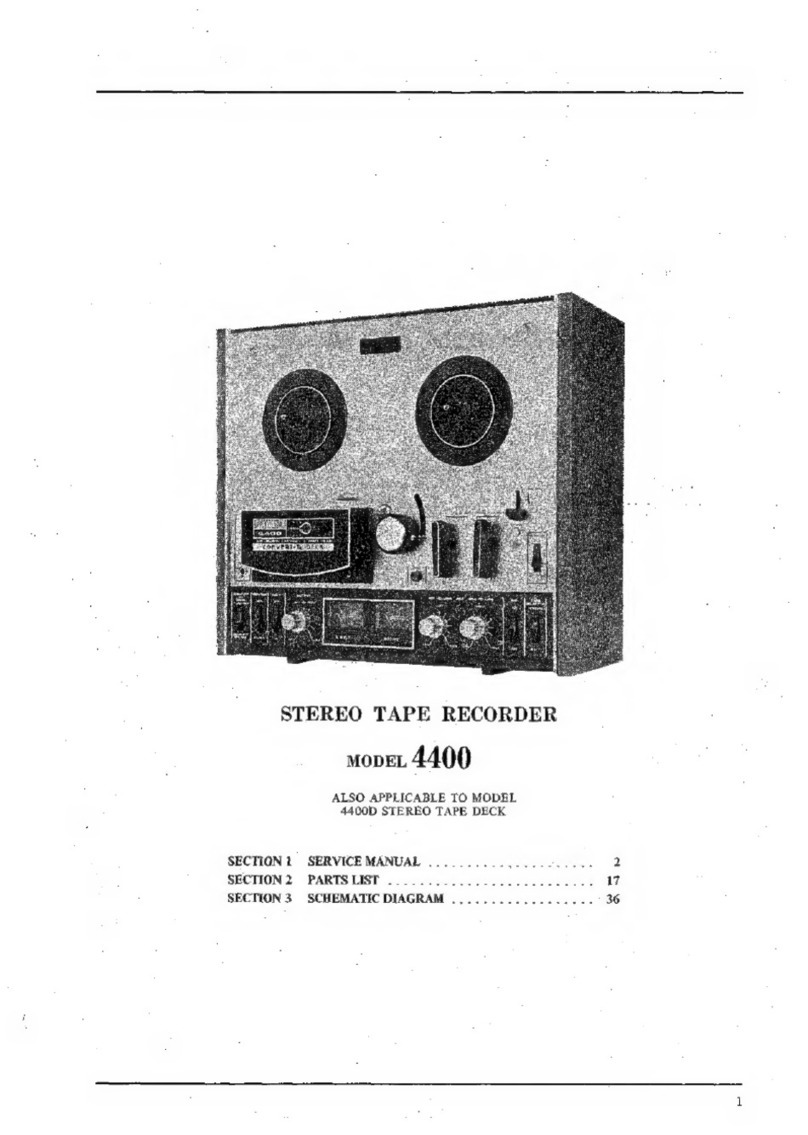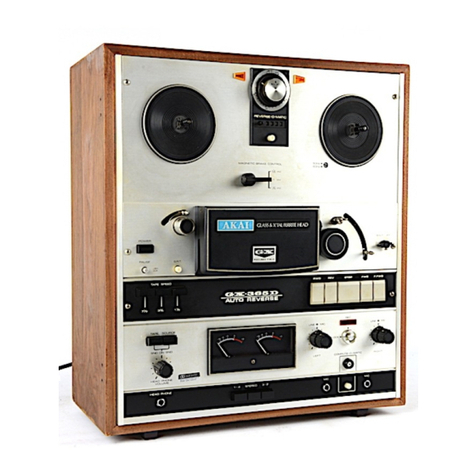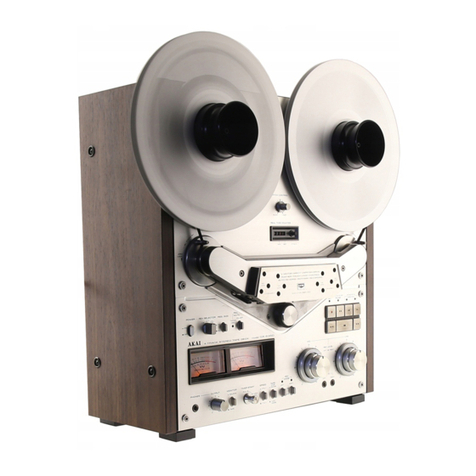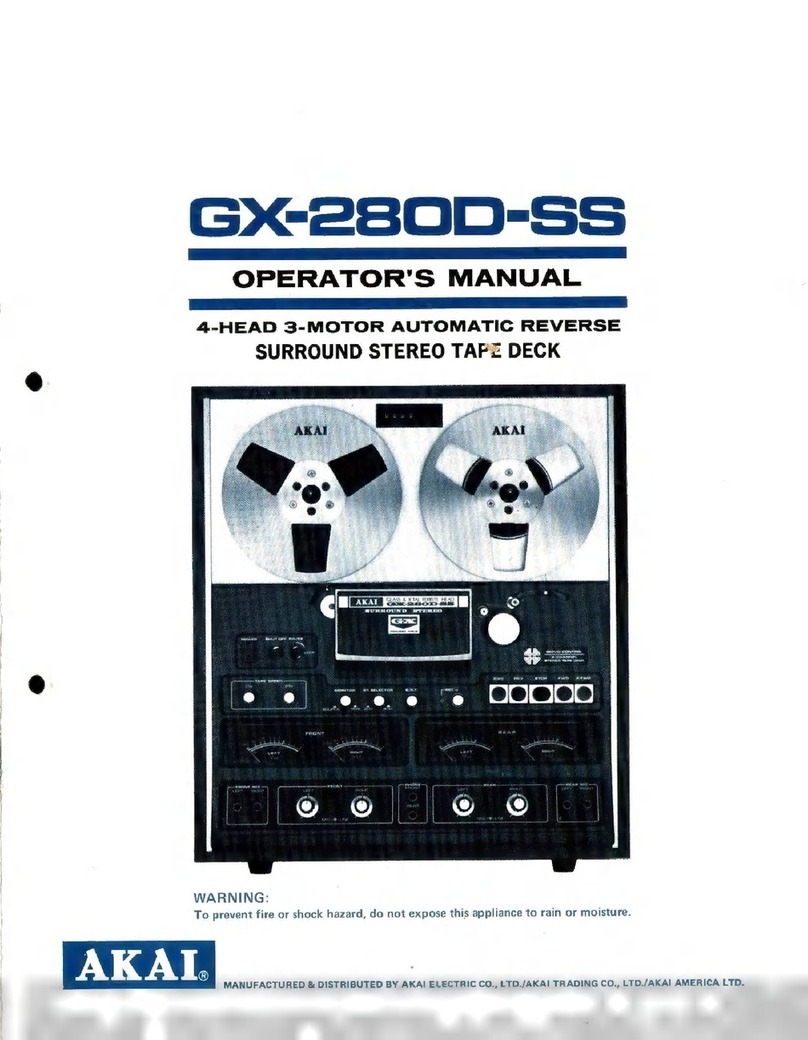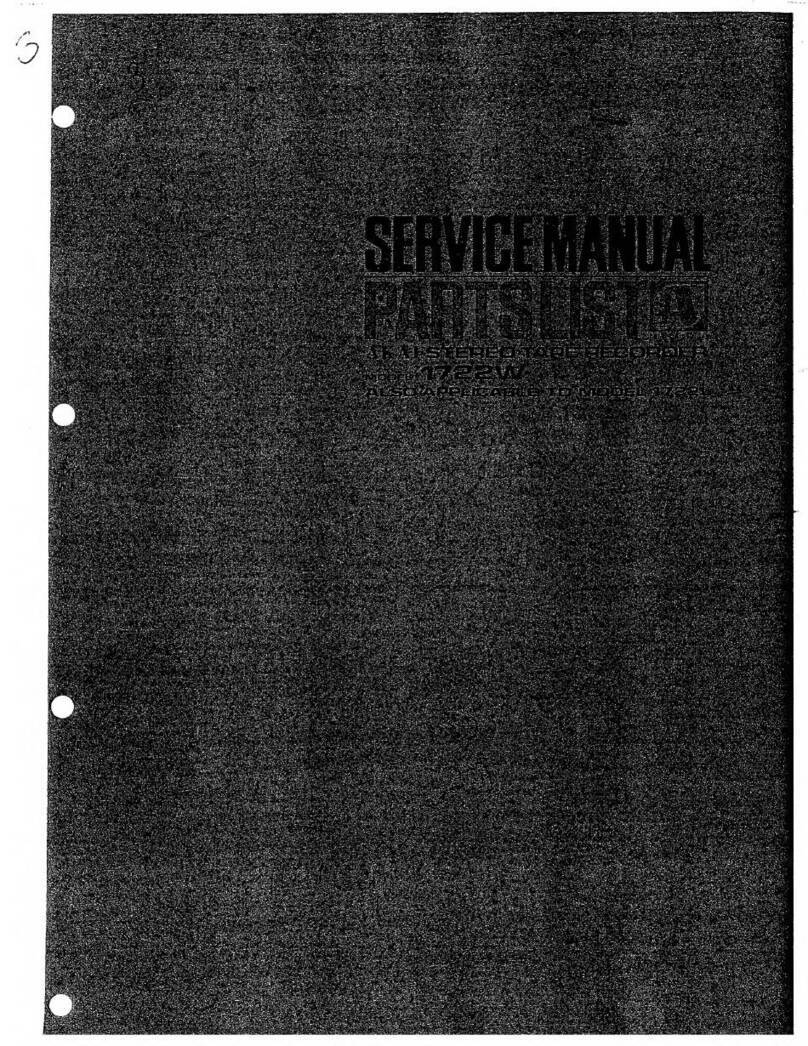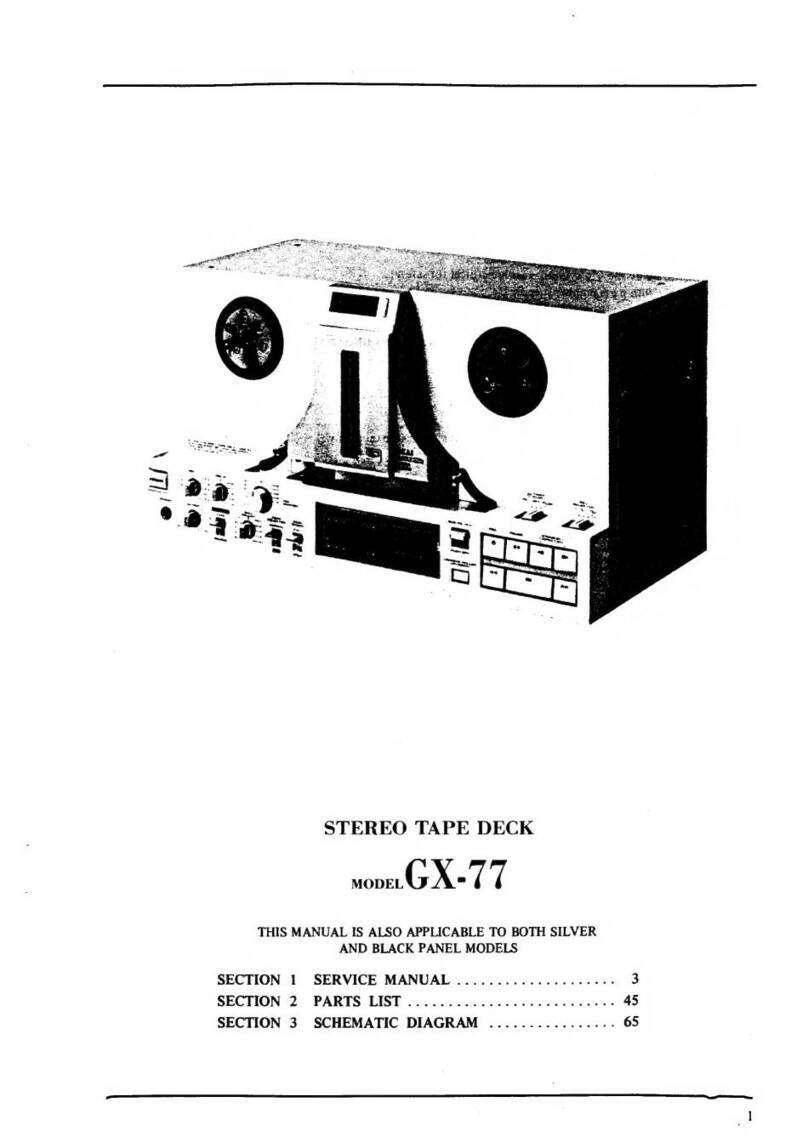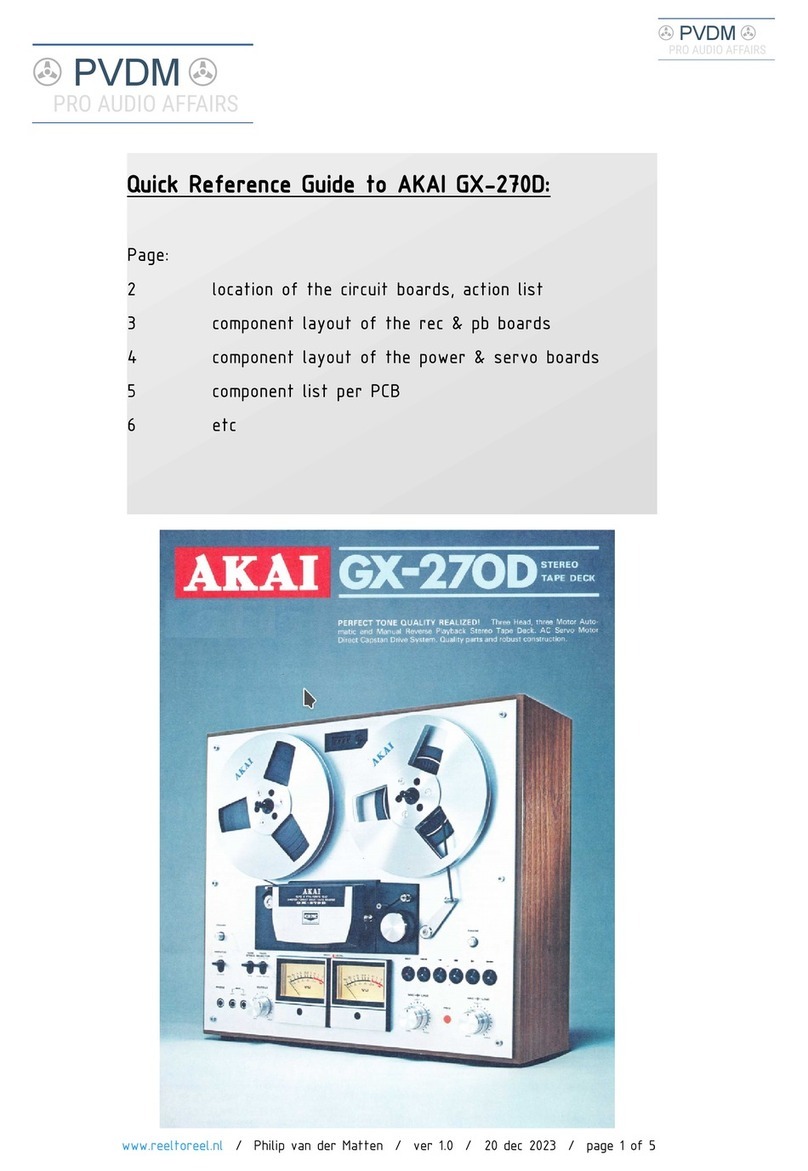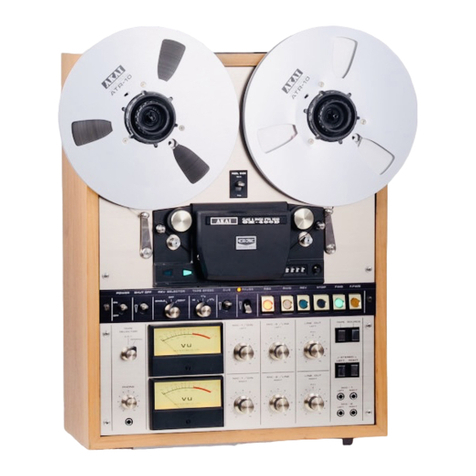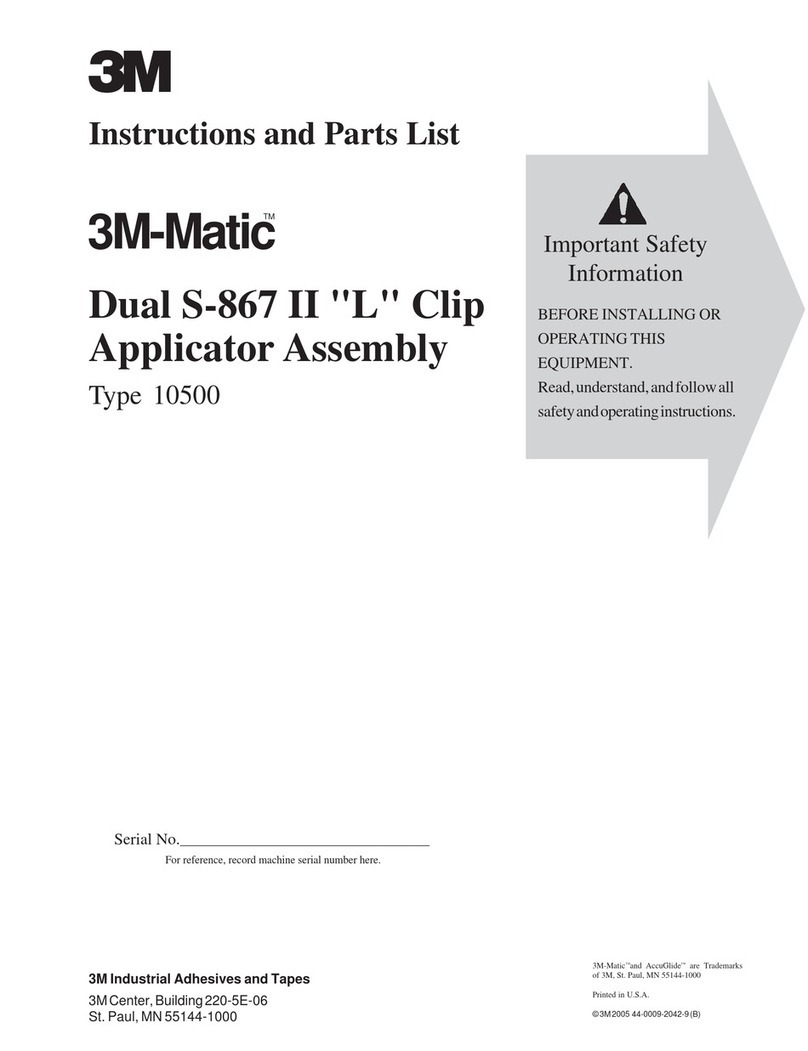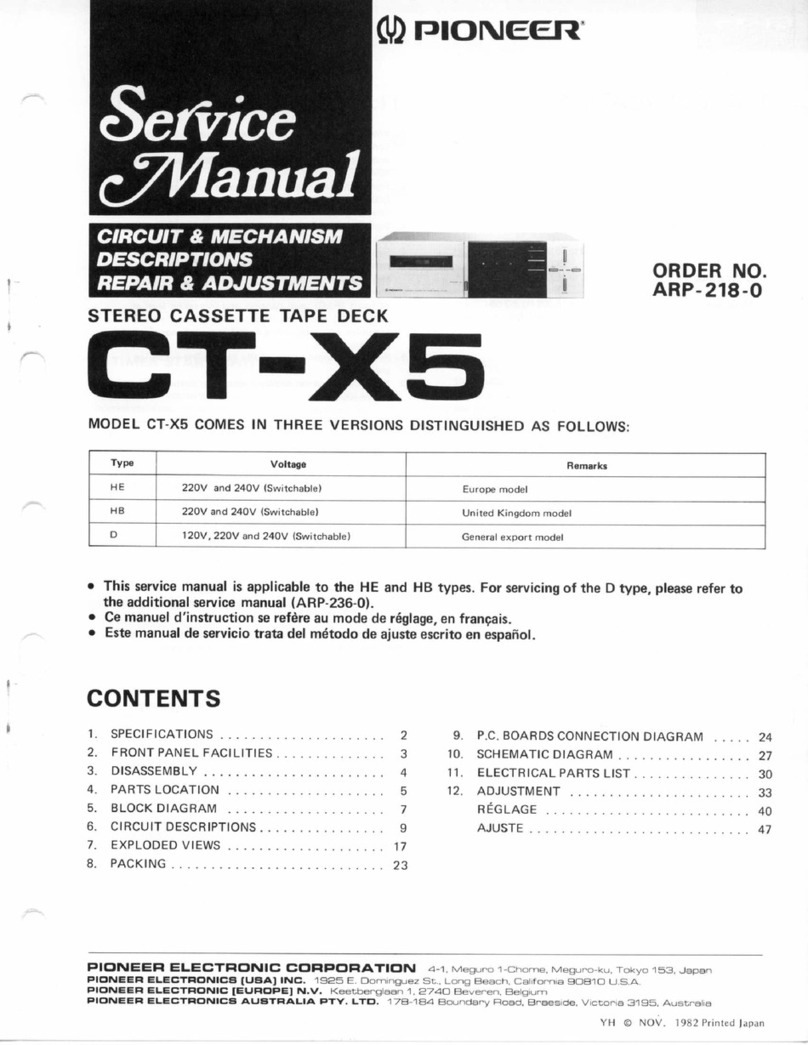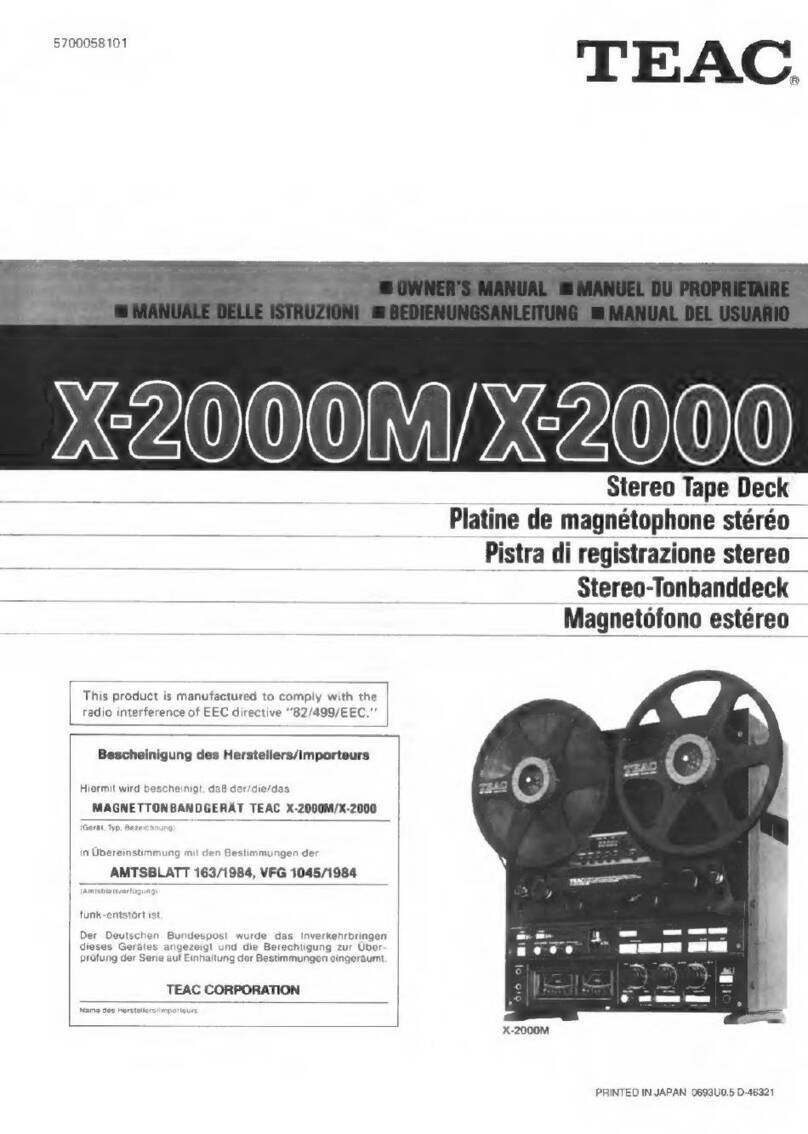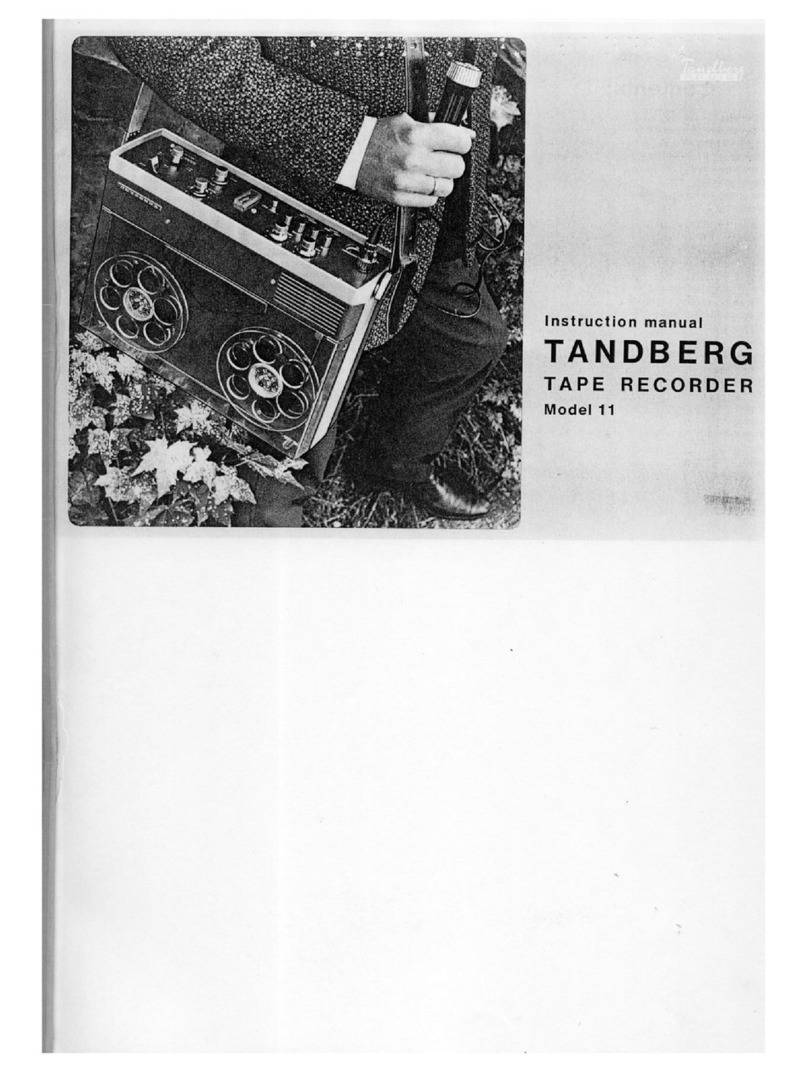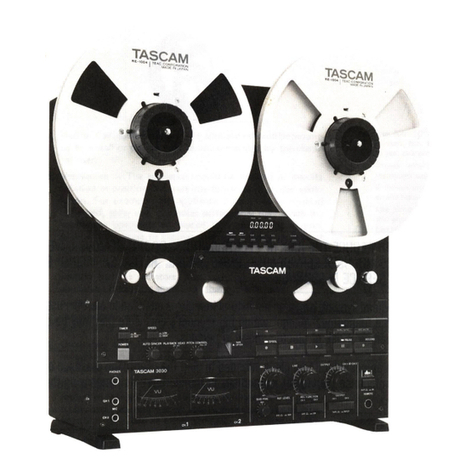I. TECHNICAL DATA
TRACK
SYSTEM
REELCAPACITY
TAPESPEED
WOW
& FLUTTER
FREQUENCY
RESPONSE
DISTORTION
(1.000
Hz
"0" VU)
SIGNAL
TO NOISE
RATIO
ERASE
RATIO
CROSS
TALK
CHANNEL
SEPARATION
BIAS
FREQUENCY
HEADS
MOTORS
REALTIMECOUNTER
FF & RWD
TIME
OUTPUT
JACKS
INPUTJACKS
DIN JACK
DIMENSIONS
WEIGHT
POWER
REQUIREMENT
* Specificationsdetermined with Akai LN-150-7 or SCOTCH #21
* For improvement'purposes' specifications
and design
aresubject
4 lrack 2 channel stereo/monaural system
Up
to 10-l/2"
reel
19cm/s
x0.8%
(7
-l12
ips)
9.5
cm/s
xl.0%
(3-314
ips)
(Pitch
control: more
lhan
t6%)
Less
than0.03%
WRMSat 19cm/s
Less
than
0.04%
WRMSat9.5
cm/s
Less
than
0.08%
DIN
45500
at 19
cm/s
Less
than0.10%
DIN45500
at9.5cm/s
30
to 27,000
Hz
13
dBat19
cm/susing
WR
Tape
30to 21,000Hz
13
dBat9.5
cm/s
using
WRTape
30
to 25,000
Hz
t3 dBat19
cm/susing
LNTape
30
to 19.000
Hz 13dB at9.5cm/susing
LN Tape
Less
than 05% aI 19 cmls
Better
than62
dBDIN45500
Better
than70dB
(at
1,000Hz)
Betterthan
40
dB
(at
1,000
Hz)
Better
than55dB
(at
1,000
Hz)
100
kHz
(6): Two GX Recording Heads,
Two GX Playback Heads,Two Erase
Heads
(3): One
ACServoMotorfor capstan
Drive
TwoACEddy
currentMotors
for Reel
Drive
Up
to 99
min59sec,
Less
than
r1.5%
120
sec
using550m
(1,800
ft.)TaPe
Line
(2): 0.775V
(0
VU)
Required
loadimpedance:
more
than
20kohms
Phone
(1): 100
mV/8ohms
Microphone
(2): 0.25
mV
Requiredmicrophone
impedance:
600ohms
LINE
(2): 70mVimpedance
100
kohms
Input2.0mV,
impedance
l0 kohms,
Ot 0.3V
440(W)
x483(H)
x 256(D)
mm, (17.4
x 19'0
x 10.1")
2l ke(46.4
lbs)
100V.50/60
HzforJPN
120V,60
Hz
forUS
& Canada
2201240V,50
Hz for Europe,UK and
Australia
1lO
|120
|220
I
240V,5
0/60Hzinternally
switchable
for other
countries
1tape unless
otherwise noted.
to change
without notice.
4

